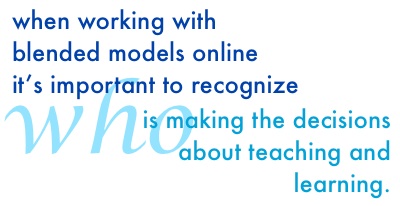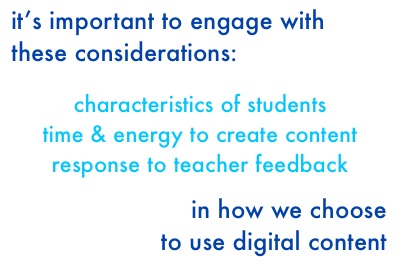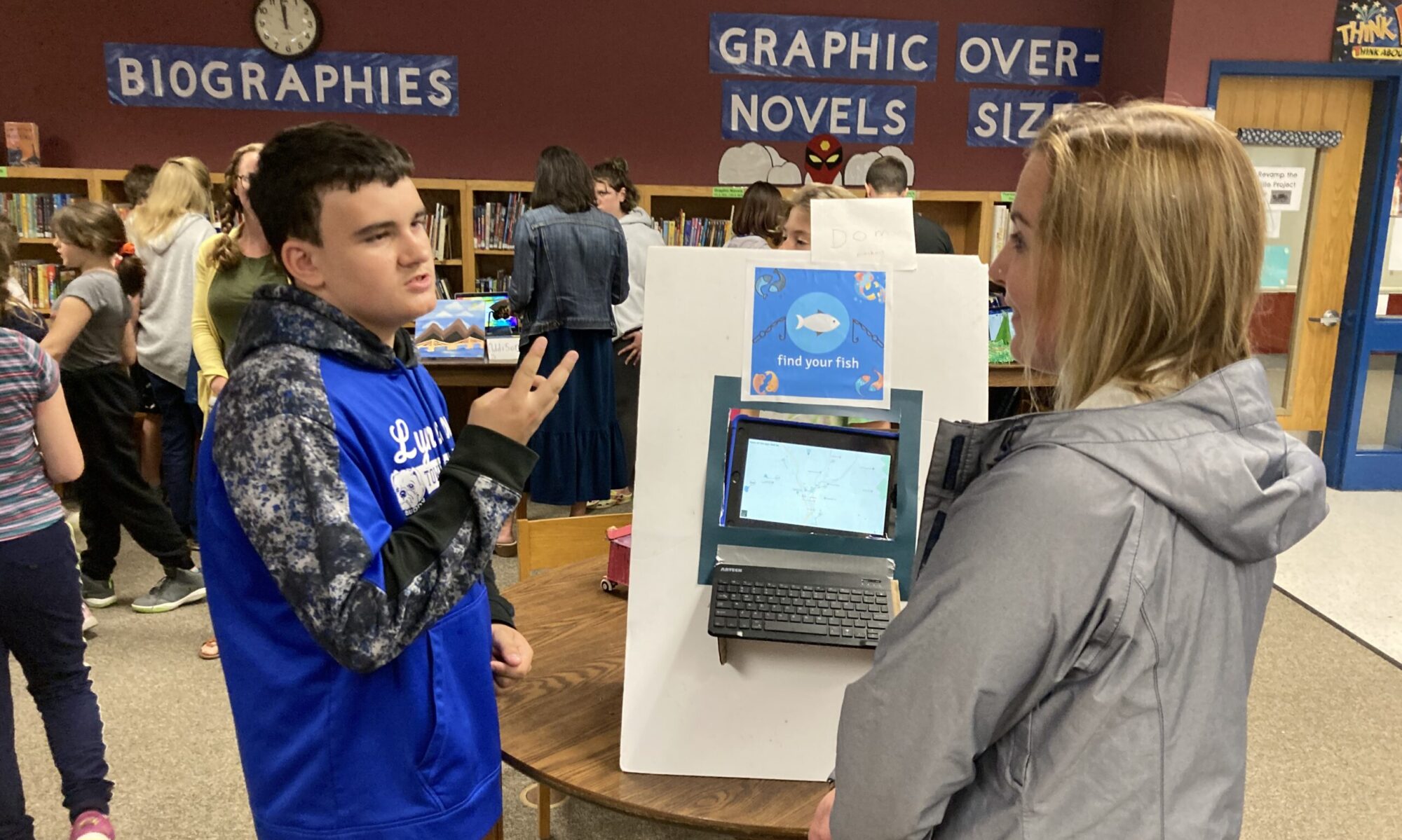In her excellent memoir Rethinking Normal, Katie Rain Hill describes her experience with online learning:
I’d click on one tab, and a bunch of modules for that subject would pop up. I’d click on ‘Section One,’ and there would be a recorded lecture or PBS documentary or article to read with some notes on the bottom. The next link would contain examples of questions and answers. The next link: more examples. The next link: a multiple-choice quiz. I’d have thirty timed minutes to take the quiz. ‘Congratulations! You got 100 out of 100.’ Move on to section two. It felt like the sections never ended.
This description rings true with many examples of online classrooms I have worked with in the past. Even though the concept of online education is considered innovative, it can simply be a replica of the “stand and deliver” type of instruction that dominated traditional classrooms for decades.
Moving it online did nothing to to engage students or meet their individual needs.
There was little consideration for the experience of the student. Again, from Rethinking Normal:
It was hard to stay self-disciplined. I’d study for four hours, then of on Facebook, then study twelve minutes, then think, I’m hungry, and go look for food in the cabinet. Then I’d use the restroom… At seven p.m. I’d still have thirty sections left to do and would stay up until late finishing. Then I’d get up in the morning and do it all again.
Teacher-centered models of instruction and assessment are not transformed into engaging through moving into an online space.
 There is growing recognition of the challenges of traditional online models, and more often we see teachers and students utilizing online resources in blended learning models, where digital content is used in conjunction with face to face instruction and support. However, when working with online resources in blended models, it is important to recognize who is making the decisions about teaching and learning.
There is growing recognition of the challenges of traditional online models, and more often we see teachers and students utilizing online resources in blended learning models, where digital content is used in conjunction with face to face instruction and support. However, when working with online resources in blended models, it is important to recognize who is making the decisions about teaching and learning.
The evolution of the Khan Academy
Khan Academy is a major player (perhaps the major player) in online educational content. What was once a series of math lectures has blossomed into a multidisciplinary online learning domain.
At stages in their growth, Khan has added tools and tweaked interfaces to allow students to shape their own experience and drive their own learning. These changes have come in response to feedback from teachers, students, and parents. However, it is important to note that although this online content provider is responsive to feedback, there are still a number of assumptions being made about teaching and learning by the developers.
Teachers can respond to these assumptions in a number of ways:
- They can choose to create parallel structures that support their students in the ways that they believe are best.
- They can create their own content and support structures.
- Or they can go with how the content provider structures the learning, and wait for the developers to make changes.
I don’t think that we can necessarily say one approach is always more advantageous that another.
The characteristics of students, the time and energy investment in creating content, the rate of response to teacher feedback; these and many more are considerations that a teacher can take into account when making decisions about how to work with online content. But what I do think is important is to engage with these considerations, and be proactive in how we choose to use digital content.
 In a recent interview on NPR, Sal Khan spoke about opening a new school, with a vision for using Khan Academy that is, in my mind, highly aligned with personalized, learner-driven education. Students access content when they encounter the need for it in the context of a larger learning experience. The independent school provides a learning space that is individualized, project-driven, multi-age, and adaptable.
In a recent interview on NPR, Sal Khan spoke about opening a new school, with a vision for using Khan Academy that is, in my mind, highly aligned with personalized, learner-driven education. Students access content when they encounter the need for it in the context of a larger learning experience. The independent school provides a learning space that is individualized, project-driven, multi-age, and adaptable.
In this setting, the “just in time” learning facilitated by the online videos can occur in the way he imagines.
To me, it sounds like Khan is continuing to learn about how online content is effectively being used in schools, and incorporating the best models into his practice. This has caused the online content guru to open a brick and mortar school, to fully realize a blended model.
Online content has come a long way from the dis-engaging experience that Hill describes.
Even the leaders in the field have been able to recognize the importance of teachers and schools to blend online with a physical learning environment. These changes have occurred thanks to the work of teachers and students who engaged with the content and figured out what works best for them in their context. As we continue to make and remake our classrooms, schools, and larger learning spaces, let us continue to innovate, imagine, and push the boundaries of what is out there.


How online education can find a path forward by @mwolofson https://t.co/9p5NHtoeyw https://t.co/cURShFuCrT
RT @innovativeEd: How online education can find a path forward by @mwolofson https://t.co/9p5NHtoeyw https://t.co/cURShFuCrT
How online education can find a path forward https://t.co/FimSaZAtIJ via @innovativeEd
Blended: a model for the future: How online education can find a path forward https://t.co/9gnAU34Y7m #highered #knowmads #edu #learning
How online education can find a path forward https://t.co/currcOaTBB | Look to your distance ed experts to innovate. #highered
How #online #education can find a path forward: https://t.co/mIUvffkByr
Via @innovativeEd
RT @start_upamerica: How #online #education can find a path forward: https://t.co/mIUvffkByr
Via @innovativeEd